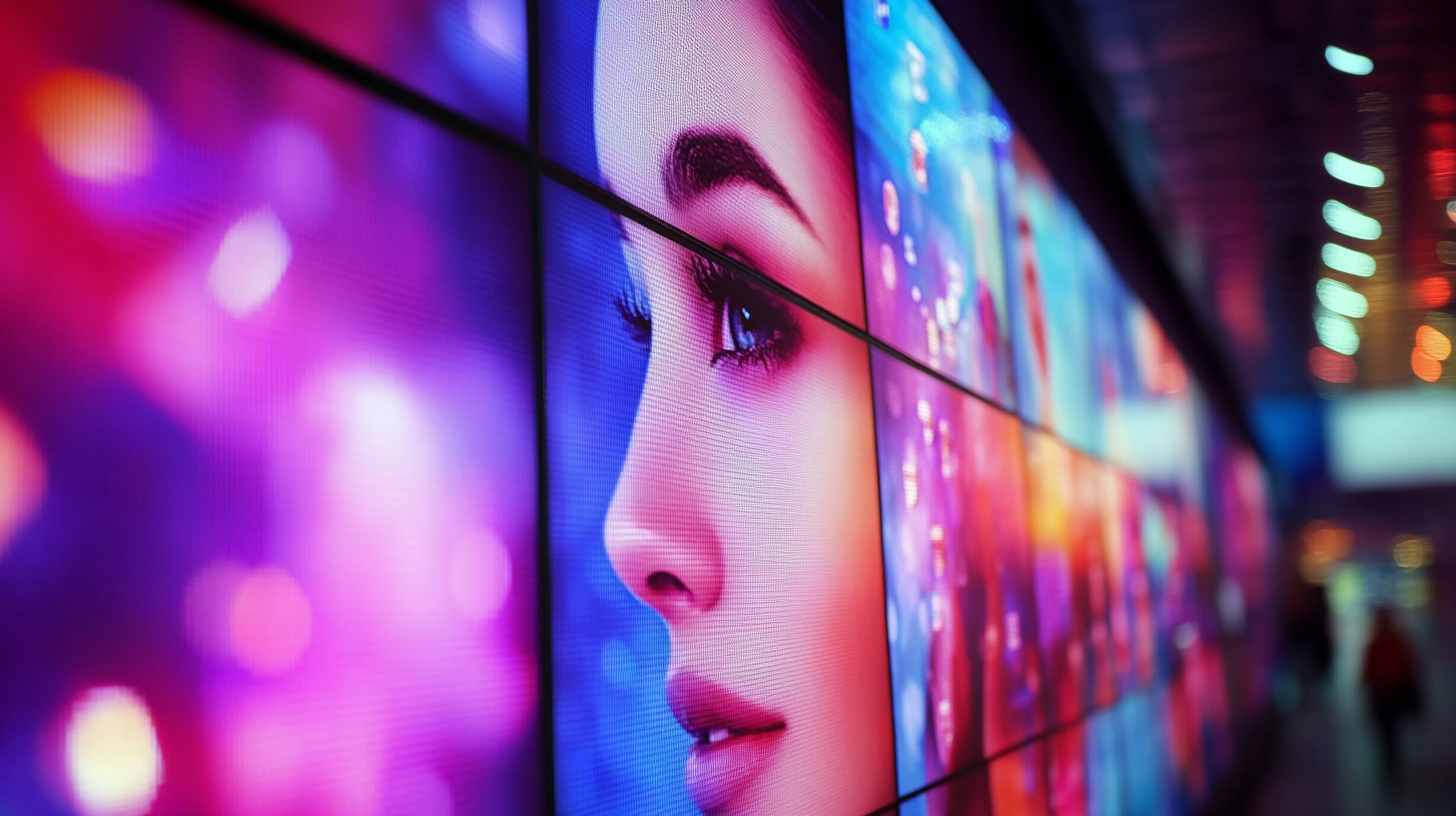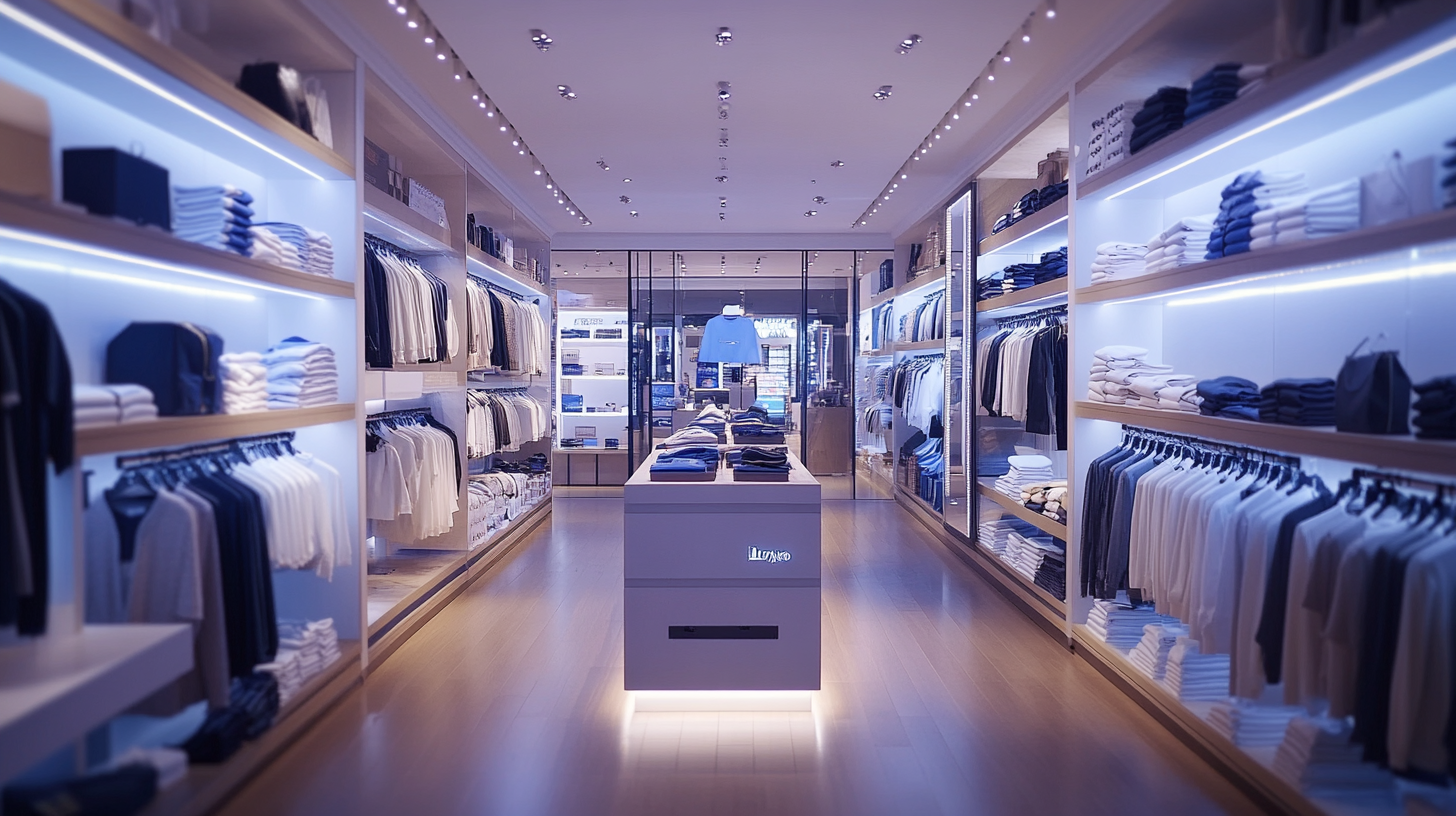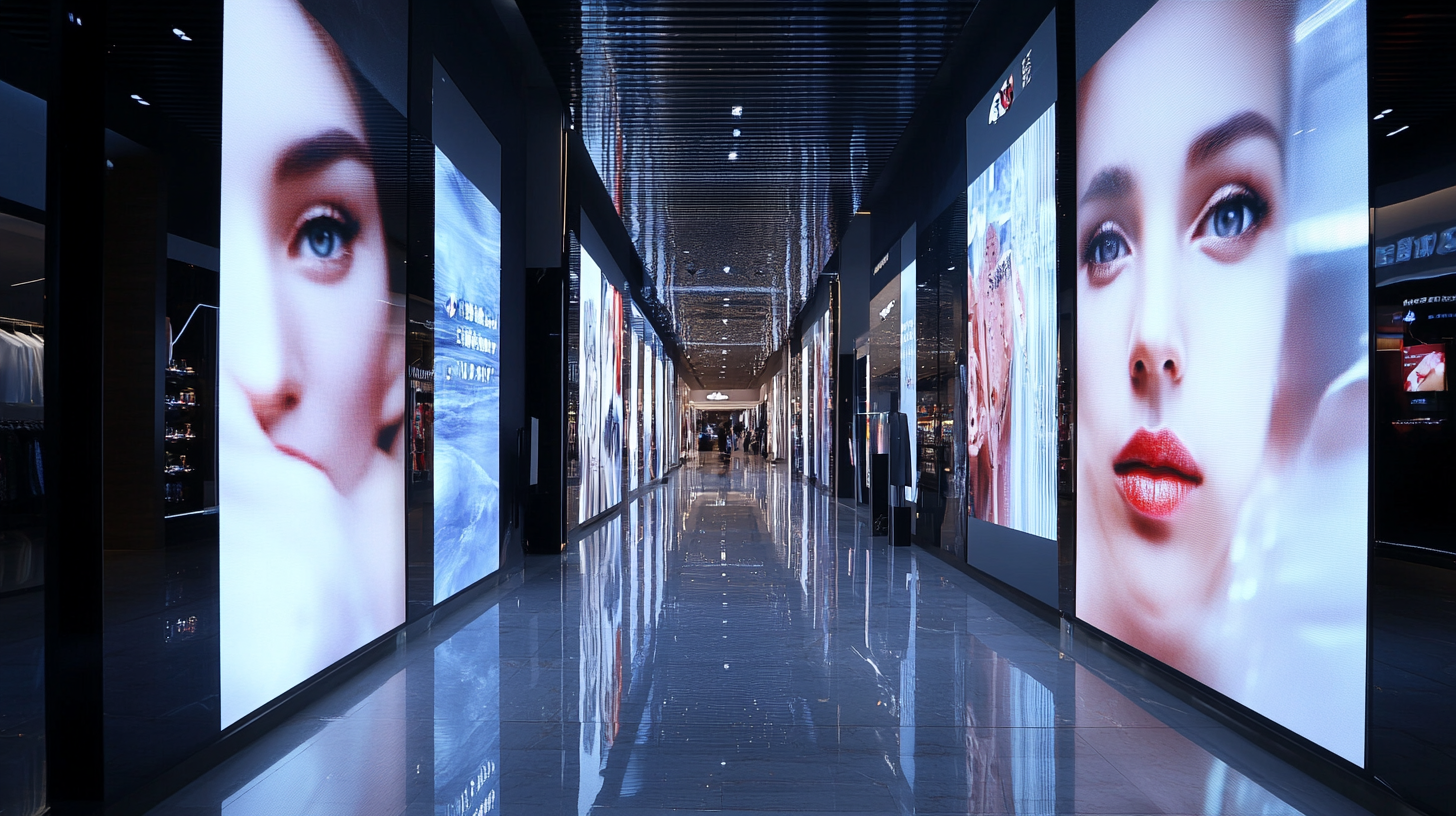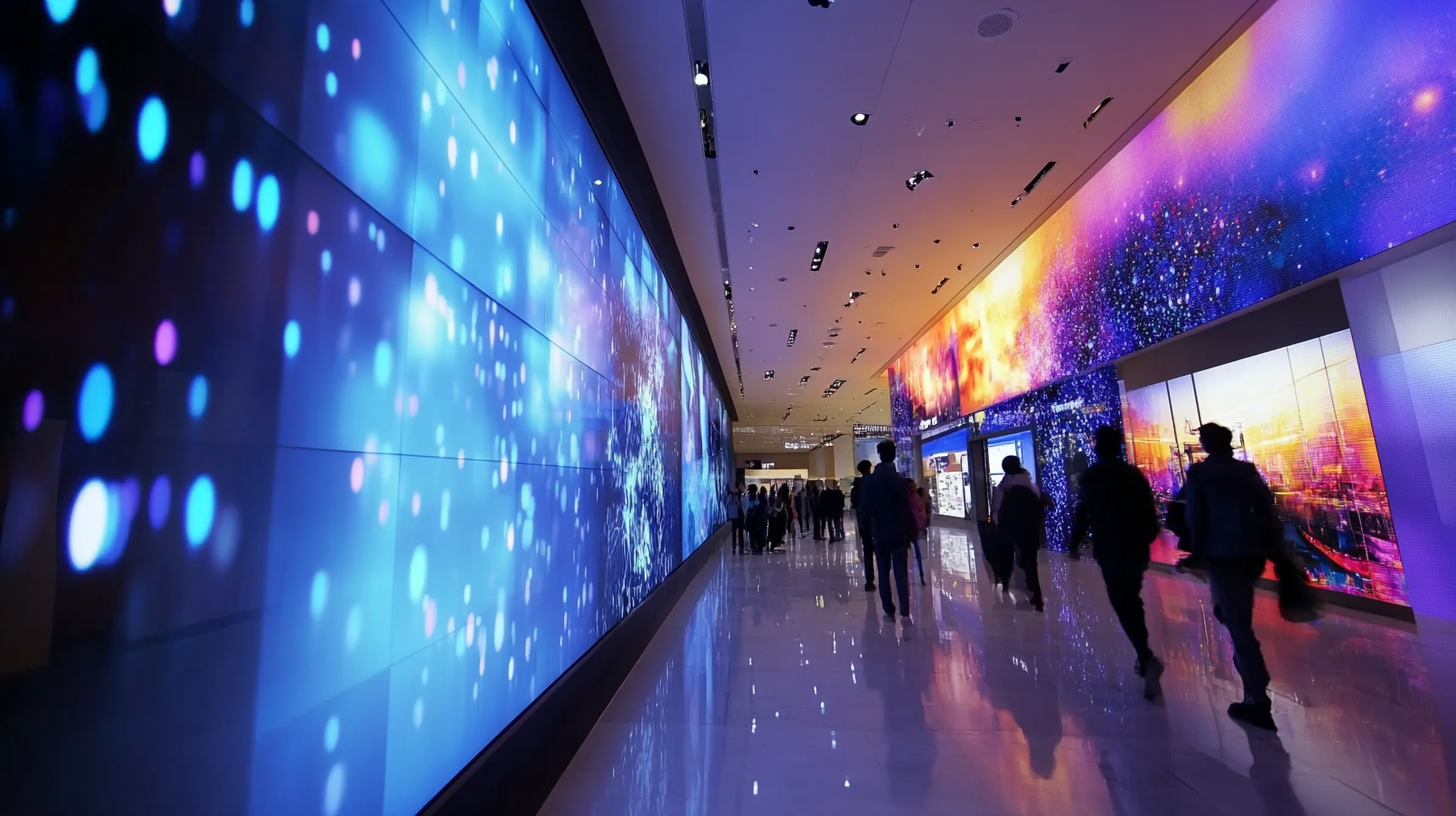Innovative Led Retail Display Solutions Transforming Shopping Experiences in the Global Market
The present-day retail industry is changing drastically as a result of many new technological advancements, among which LED retail display solutions arguably represent the most influential innovation. As per report published by MarketsandMarkets, the global LED display market shall grow from USD 7.8 billion in 2020 to USD 14.6 billion by 2025, implying a compound annual growth rate (CAGR) of 13.8%. Such rapid growth is justified by the demand for ever-more amazing and dynamic visual displays which advance the experience of shopping as well as capture consumers' attention to sales.
Increased engagement by retailers will be available along with a high-level immersive environment; therefore, LED retail display solutions can afford a versatility and creativity which ordinary signage cannot. Everything from high-resolution visuals to real-time updates is included, and therefore, the benefits can be shared through targeting messages to new audiences or customer segments. It has been proven by the study of Grand View Research that by using innovative display technologies, brands can improve the customer interaction and enhance brand loyalty; hence, LED retail display holds an important position for the reshaping of traditional shopping.

Revolutionizing Store Design: The Role of LED Displays in Modern Retail Spaces
LED screens have redefined spaces within modern retail environments, establishing an experience that has been described as dramatic for shoppers. According to recent industry statistics, almost 70% of the percentage of retailers investing in integrated LED solutions is setting up lively and interesting environments within which to delight customers. Therein, the clear-cut importance of avant-garde visual technology in the modern retail strategy shines out. SHOP PLUS 2025 will be the future exposition that will bring to the fore novel goods and services yet to be highlighted, bringing experts together to discuss the new evolution of commercial space design. It is quite clear that with the improvement of physical brand representation, LED displays have also begun to integrate behaviors and patterns with which the consumers engage, thereby providing more immersive shopping experiences-the newly revamped flagship stores, for example. Strategic lighting and bright visuals not only increase traffic to stores but also have a greater tendency to evoke emotions from the consumers. And further developing the point are high-end POS systems coupled with beautiful displays-a softening reality in modern retail. The innovation does not only make transactions easier; it also makes visual merchandising so that end-caps of checkout lanes become more interactional brand touch points. As the industry brings in such technology, so the meeting of technology and design in the retail environment promises a future where the business of retail interaction becomes a new standard in the world market.

Enhancing Customer Engagement Through Interactive LED Solutions
So, the interactive LED display solutions are transforming the complete retail landscape. These are not just beautifying the display area, but they effectively engage customers with the shopping experience itself. By providing store displays of moving visuals, the attention of people is attracted by creating an atmosphere for exploring and prolonging the visit.
Interactive LED displays enable customers to interact with the product in the way that no traditional display can offer. It can have a touch-sensitive surface, an augmented reality projection, and real-time product information: all these create a touch of personalization and immediacy. These personalized recommendations will make the shopping experience not just more enjoyable but also more effective, as they accompany the shoppers within the store.
Such innovations would see brands embracing benefits from interactive LED supply so that a journey is taking a turn toward creativity and innovation in retail strategy. These technologies will help in establishing identity in the overcrowded market all nowadays with their advanced technologies. This symbiosis of interactivity and exciting design must not just produce customers' satisfaction and loyalty but generate revenue because true customer experiences are the future of retail.

Cost-Effective Benefits of LED Displays for Retailers and Brand Visibility
LED display systems are being a game-changer for retailers seeking cost-effective but resourceful methods to improve brand visibility in this competitive retail environment. Grand View research reports that LED display markets are poised to generate $29.8 billion worldwide by 2025 with a compound annual growth rate of 15.6%. Most retailers view LED technology as a major step to attracting their customers and, subsequently, increasing sales, hence the phenomenal boom in adoption.
Lower operational costs are among the biggest advantages offered by the LED display compared with traditional advertisement methods. The Digital Signage Federation states that LED displays use 40% less energy than traditional signage while doing so. This obviously amounts to savings on electric bills and a decreased carbon footprint, thus making it eco-friendly. The long lifespan of LED displays, ranging from more than 50.000 hours, eventually means that retailers have few maintenance and replacement costs on LED displays and an option to channel the funds used in this aspect into other important areas of their businesses.
Also, again, LED conduits are quite good for promotions. Businesses availing of digital signages, based on a study by the Nielsen Company, produce an average sale improvement of 30%. The bright and dynamic content of LED displays can capture consumer attention better than static displays, which is often very critical in a busy retail environment. This feature enables retailers to display promotional content, new products, and seasonal items interactively and up-to-date, thus keeping customers hooked and ensuring lasting memories of the shopping experience. More than pulling in foot traffic, the strategy is geared toward instilling more loyalty in the company clientele, thus establishing LED displays as a necessary part of modern retail hocus-pocus.

Sustainability in Retail: How LED Technology is Reducing Environmental Impact
With sustainability for the retail sector receiving prime attention in global businesses, LED lighting is one of the main technologies responsible for this alteration. This has proved that LED light significantly reduces environmental impact. The Department of Energy states that LEDs consume 75% less energy than incandescent alternative lights and significantly reduce carbon emissions due to higher energy efficiency. Because of the growing concern for green initiatives among retailers, the adoption of LED technology enhances the efficiency of energy usage and responds to consumer demands for sustainable shopping experiences.
Additionally contributing to an LED's sustainability profile is its life span. An LED has a life rating of up to 25 times that of a conventional bulb, which means less replacement and landfill. The International Energy Agency estimates that a global switch to LED lighting could provide reductions of greenhouse gas emissions up to 1.5 gigatons every year. Not only does this good directly for the environment, but it further enables retailers to save money from maintenance for other innovative solutions to promote customer engagement.
Another approach to sustainable promotion opens up with LED displays in retailing. Many retailers are exploiting dynamic LED screens to project eco-friendly messages and inform consumers about their sustainable practices, such as responsible sourcing of raw materials or reducing packaging waste. According to a research study conducted by Grand View Research, with the LED display market slated to reach $103.8 billion by 2027, there is a growing realization that LEDs are a major ingredient in sustainable retail strategies. Retailers are improving their productivity and, more importantly, providing customers with an environmentally friendly shopping experience via LED technology.
Future Trends: What’s Next for LED Displays in the Shopping Experience
The retail world is in constant flux, and LED displays have emerged as one of the trump cards in transforming shopping experiences worldwide. Following certain trends, this innovative tool is also expected to beautify stores and make significant behavioral changes among customers. With the technology evolution leading to higher interactivity, personalization, and immersion in LED displays, shoppers are expected to be engaged across many sensory measures.
The other major trend we can see nowadays is the use of augmented reality along with LED displays. Through AR, retailers can develop engaging experiences where the physical and digital worlds intermingle. Shoppers can visualize products in their surroundings or determine how a piece of clothing fits without stepping inside a fitting room. Therefore, real-time analytics will enable the retailer to serve relevant content onto its LED displays to provide tailored promotions and information depending on the preferences of individual shoppers, greatly improving their shopping experience.
In addition, sustainability will also be a vital factor that will shape the future of LED displays in retail. As consumers are keen on environmental-related issues, the demand for energy-efficient ones forces retailers to opt for LED technology that minimizes energy use yet maximizes visual impact. This way, retailers align themselves with global sustainability standards and earn credit as good corporate citizens among the eco-aware community. All of these trends coming together will starkly reposition the retailing landscape, using LED displays to create brilliant shopping moments.
